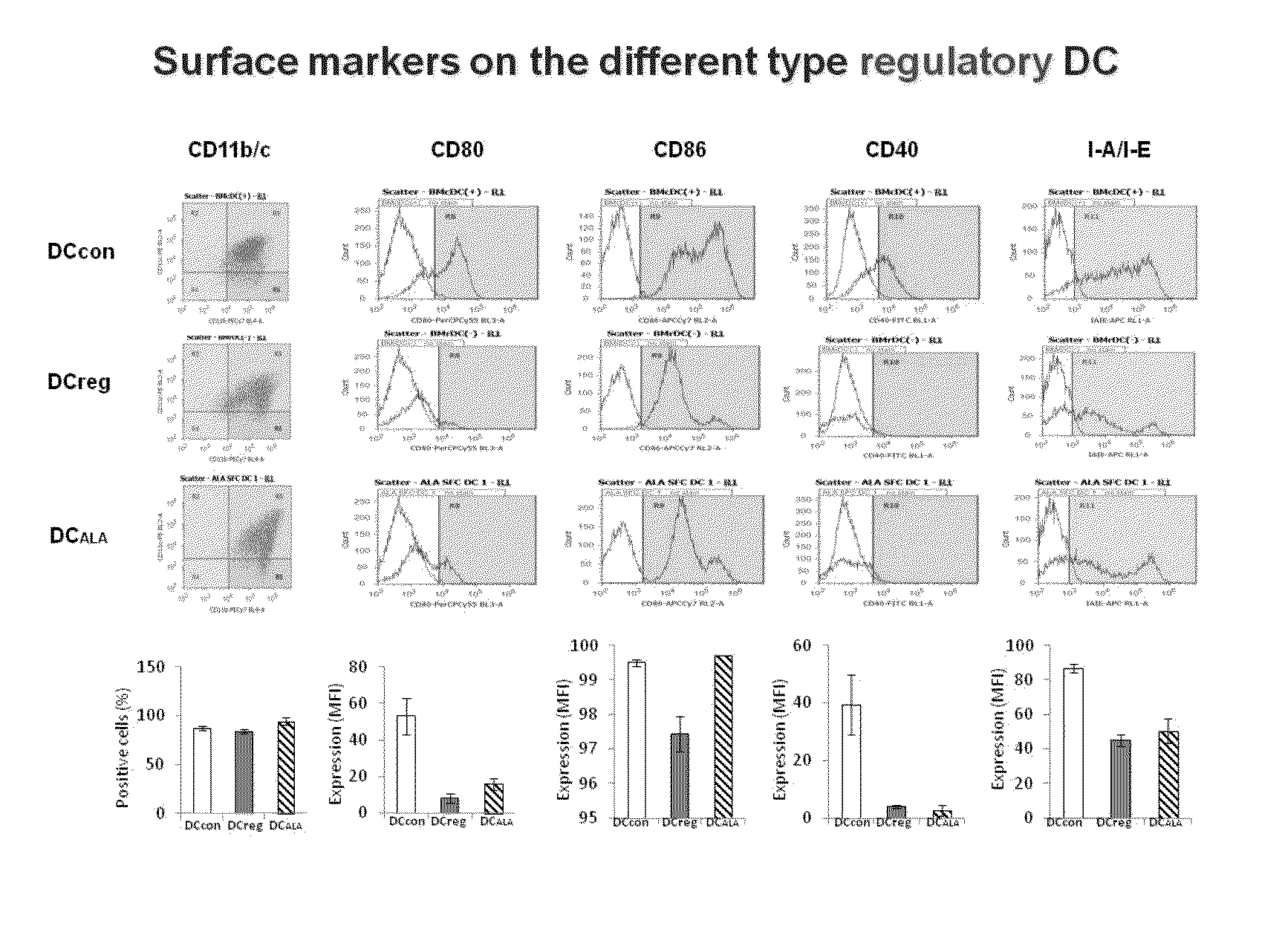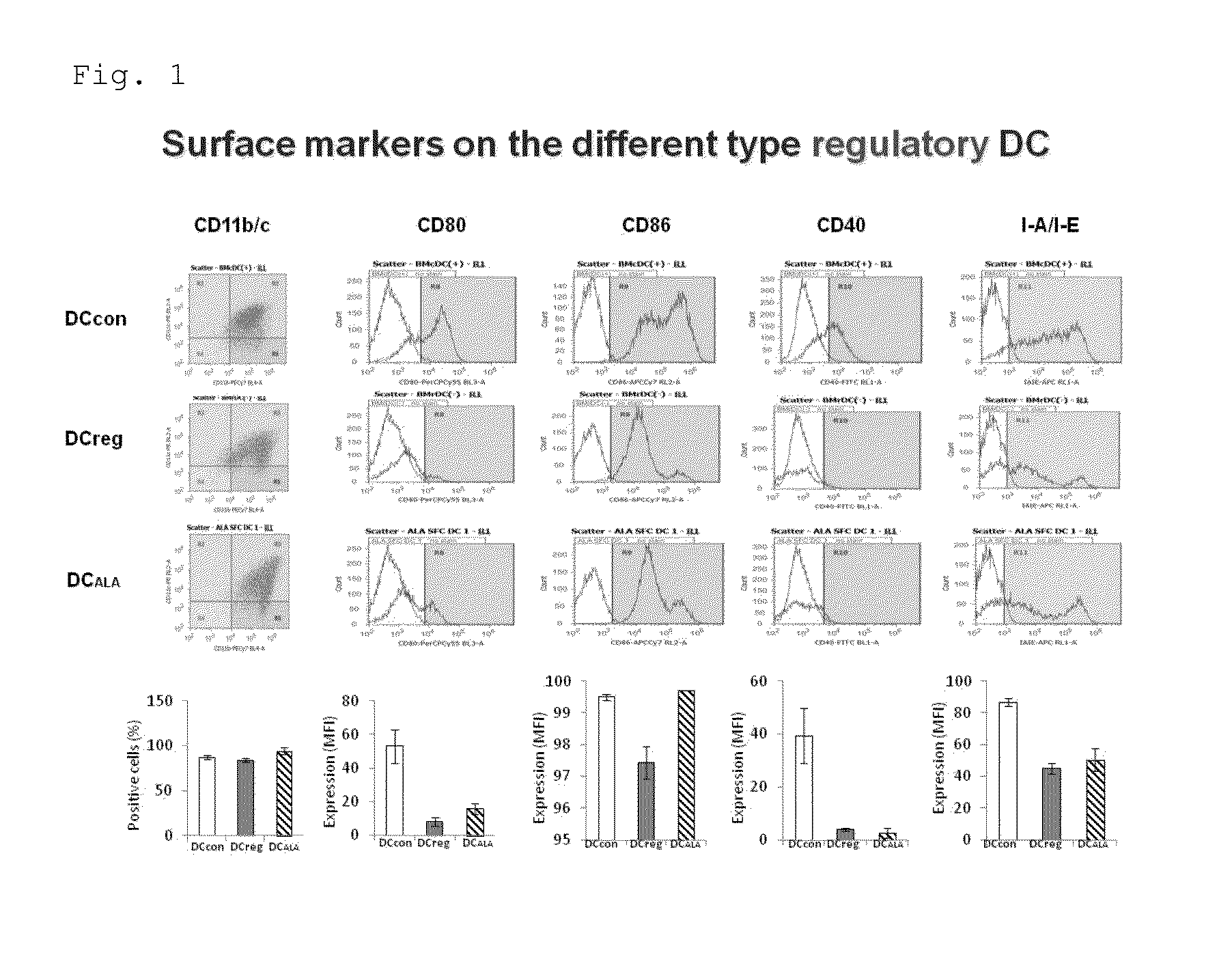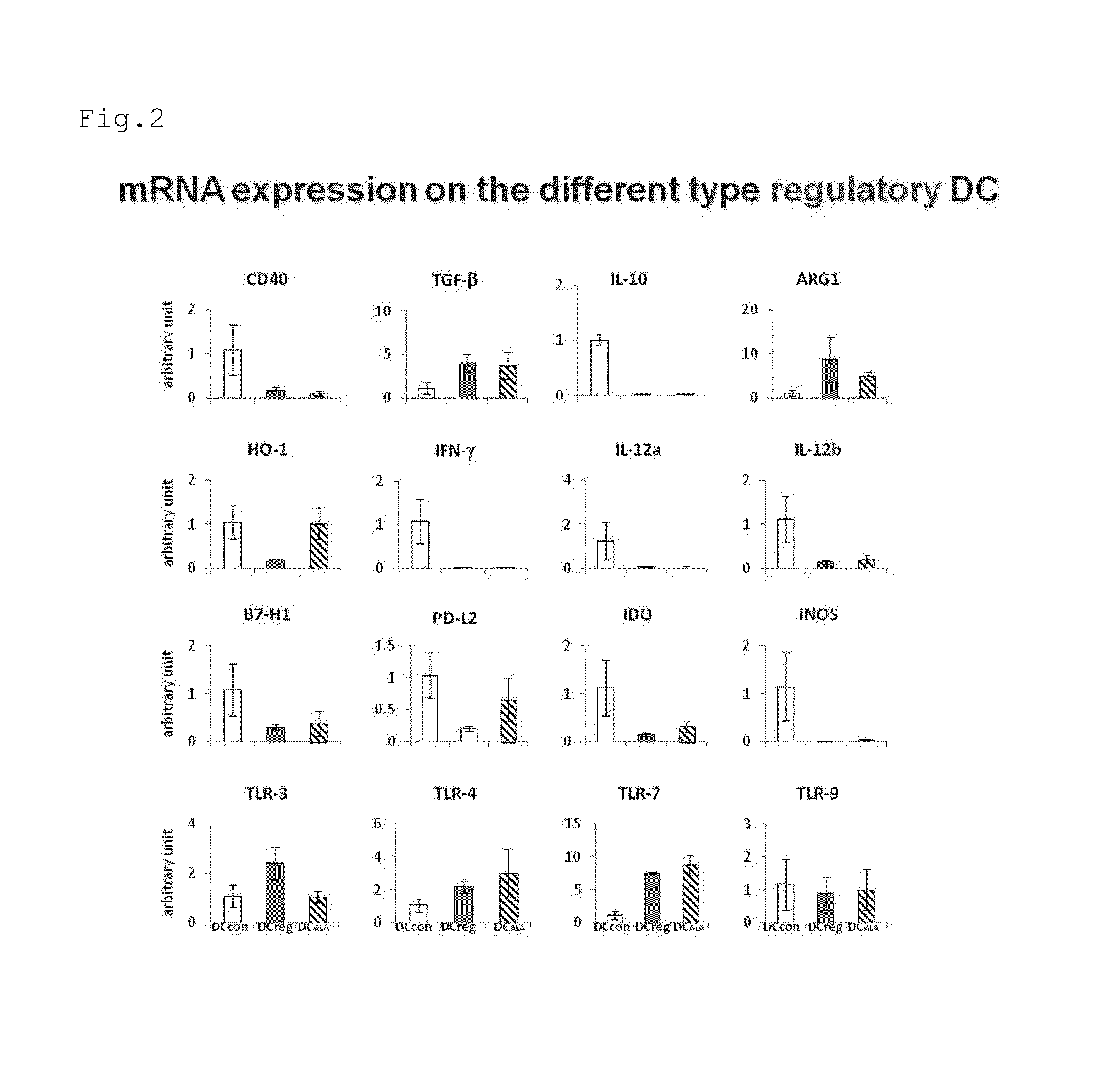Immune tolerance inducer
a technology of immune tolerance and inducer, which is applied in the direction of immunological disorders, drug compositions, peptide/protein ingredients, etc., can solve the problem of often lacking iron and achieve the effect of enhancing the
- Summary
- Abstract
- Description
- Claims
- Application Information
AI Technical Summary
Benefits of technology
Problems solved by technology
Method used
Image
Examples
example 1
[0077]Dendritic cells (DC) were prepared using ALA and SFC, and an evaluation was made as to whether the cells actually prepared induced regulatory T cells and had an equivalent function to that of regulatory DC induced by transforming growth factor-β (TGF-β) and IL-10, which are inflammation inhibitory cytokines secreted by regulatory T cells.
[Induction of Dendritic Cells by the Addition of ALA to Cells Obtained from Bone Marrow]
[0078]Bone marrow was extracted from an 8-week-old A / J(H2-KK) mouse. After removing erythrocytes by hemolysis treatment, the resulting cells were seeded in a culture dish. The cells were then cultured in an RPMI-based medium (hereinbelow, written as an RPMI medium), and from the second day, 100 μM ALA hydrochloride and 50 μM SFC were administered in conjunction with 10 ng / ml cytokine GM-CSF, and culture was continued for three days. The medium was then exchanged for a fresh RPMI medium (containing 10 ng / ml GM-CSF, 100 μM ALA hydrochloride, and 50 μM SFC), a...
example 2
Expression of the Dendritic Cell-Specific Surface Markers
[0081]The expression of the dendritic cell-specific surface marker was examined to see if the dendritic cells induced by the addition of ALA had characteristics of mature dendritic cells or tolerogenic dendritic cells. That is, the expression of the mature dendritic cell markers, i.e., CD80, CD86, CD40, and I-A.I-E (MHC class II), was analyzed by a flow cytometer. The results are shown in FIG. 1 (the four columns on the right side). As a result, as has been known, it was found that the mature dendritic cell markers were expressed in BM-DCcon, whereas the expression of those markers was lower in BM-DCreg than in BM-DCcon. Compared to the above, the expression of each mature dendritic cell marker in BM-DCALA was as low as that in BM-DCreg. That is, it was suggested that dendritic cells closely resembling BM-DCreg were successfully prepared by the addition of ALA.
example 3
Expression of the Immune Related Genes
[0082]It was studied whether or not the dendritic cells induced by the addition of ALA expressed a gene similar to that expressed in mature dendritic cells or tolerogenic dendritic cells. That is, mRNA was extracted from BM-DCALA, BM-DCcon, and BM-DCreg and the expression of a gene involved in immune induction or immune suppression was examined by RT-PCR. The results are shown in FIG. 2. As a result, BM-DCALA exhibited a tendency similar to that of BM-DCreg with respect to many genes. For example, the expression level of CD40, which is a mature dendritic cell marker, was low, while the expression level of TGF-β was high in BM-DCALA. Meanwhile, BM-DCALA exhibited a gene expression similar to that of BM-DCcon with respect to genes such as HO-1. That is, it was shown that the properties did not completely match but were similar between BM-DCreg and BM-DCALA.
PUM
| Property | Measurement | Unit |
|---|---|---|
| thickness | aaaaa | aaaaa |
| time | aaaaa | aaaaa |
| body weight | aaaaa | aaaaa |
Abstract
Description
Claims
Application Information
 Login to View More
Login to View More - R&D
- Intellectual Property
- Life Sciences
- Materials
- Tech Scout
- Unparalleled Data Quality
- Higher Quality Content
- 60% Fewer Hallucinations
Browse by: Latest US Patents, China's latest patents, Technical Efficacy Thesaurus, Application Domain, Technology Topic, Popular Technical Reports.
© 2025 PatSnap. All rights reserved.Legal|Privacy policy|Modern Slavery Act Transparency Statement|Sitemap|About US| Contact US: help@patsnap.com



